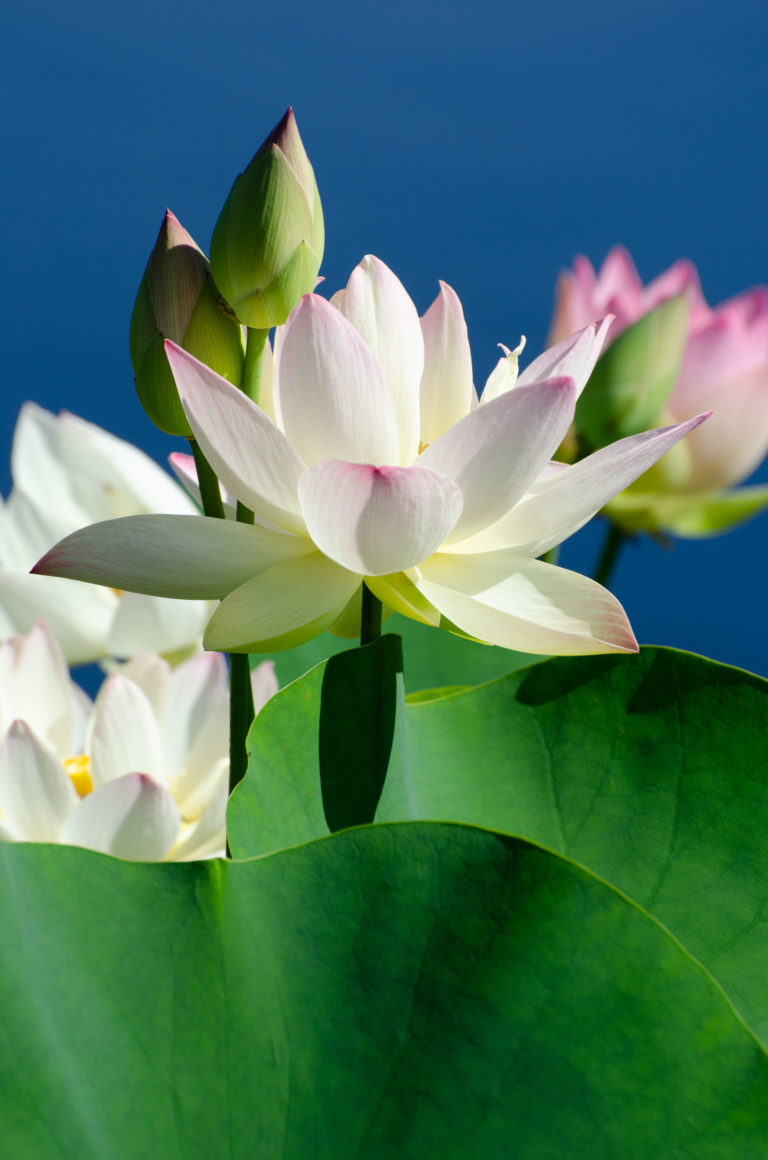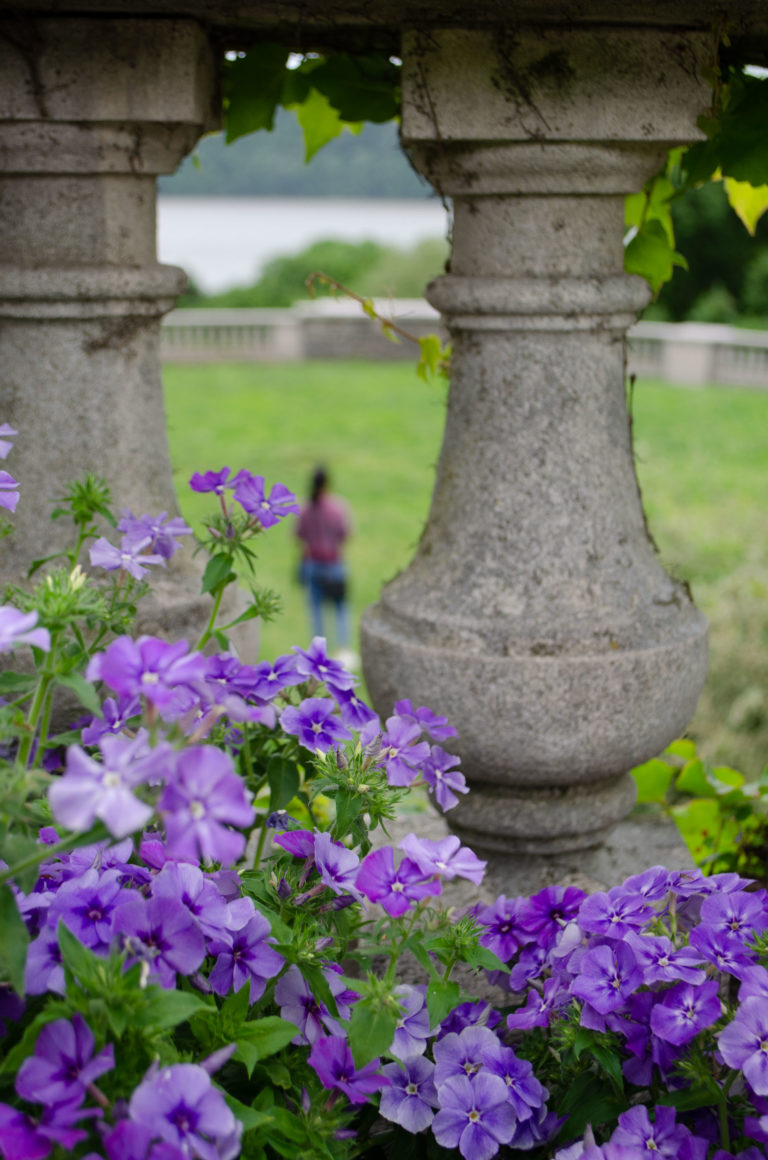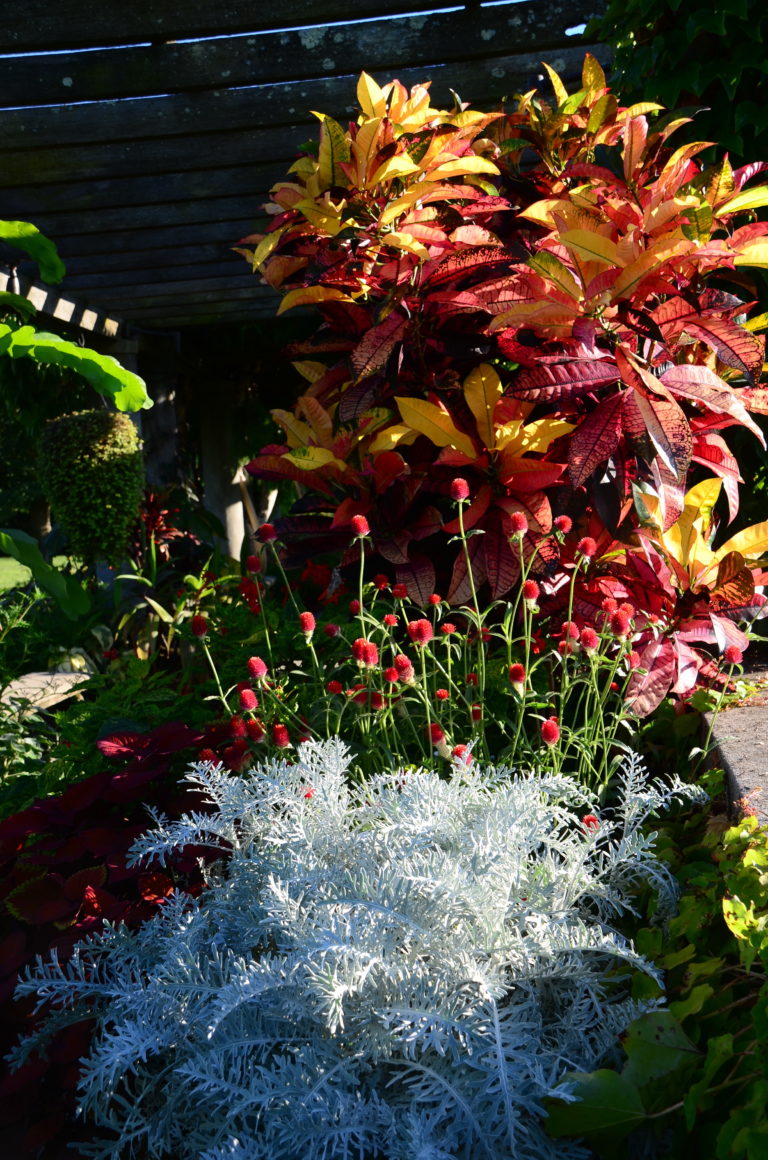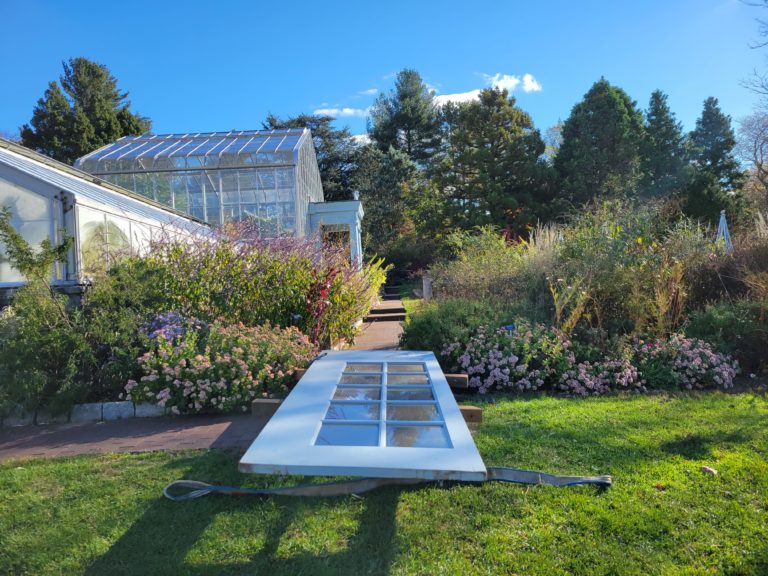
An Autumnal Cadenza Wraps up the Season
November 20, 2022November weather this month was unbelievable, with highs of 78, followed by daring chills of 38 degrees. A classic performance, winter’s arrival and autumn’s completion are reliable, but the handoff is...less reliable. I like to think of this seasonal transition as a cadenza, a flourish of improvisation that wraps up a musical composition. Cadenzas include callbacks to the melody, phrases plucked from the original composition but instilled with fervor or ornate nuances. Like an Abelia grandiflora that bloomed in summer, but is back right before frost with more flowers.
Gardeners know that frost will arrive and that there are many tasks they need to make happen before that event. As to when it arrives, however, we can only make well-educated estimates. Here is our own “autumnal cadenza.”
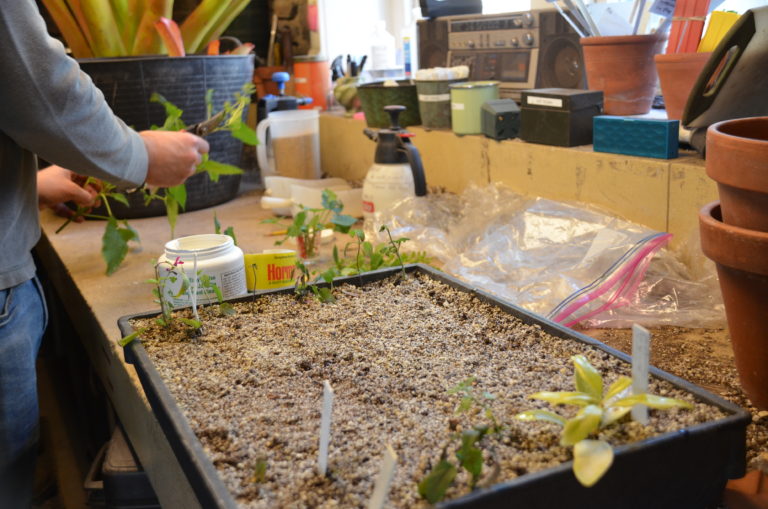
Many “annual” plants, plants that cannot survive the frost and are typically enjoyed for summer and autumn, are in fact perennials in their native range. Some favorites include salvia and coleus, which grow in many areas at Wave Hill. Gardeners have been taking herbaceous cuttings of these plants for the past few weeks, but time is running out—these cuttings must be harvested before frost.

Taking vegetative cuttings is an easy task, but keeping them happy through the winter can be difficult without the correct conditions. Cuttings should be happy in the Tropical House, which is kept warm and humid.
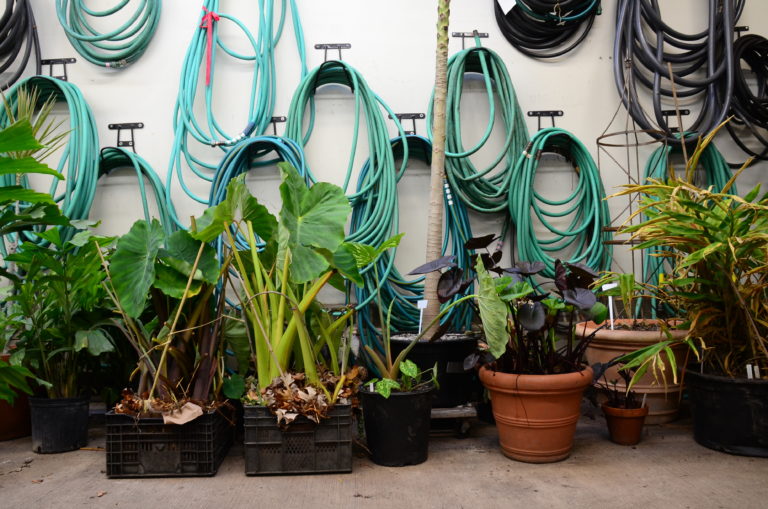
Plants not hardy to the New York City winters will be moved indoors for storage. Some of these plants respond well to simply getting dug and potted up. Those with underground storage organs (bulb, corm or rhizome) prefer to be dug and cleaned before storing. Among the familiar plants that prefer the latter are caladiums, cannas and dahlias.
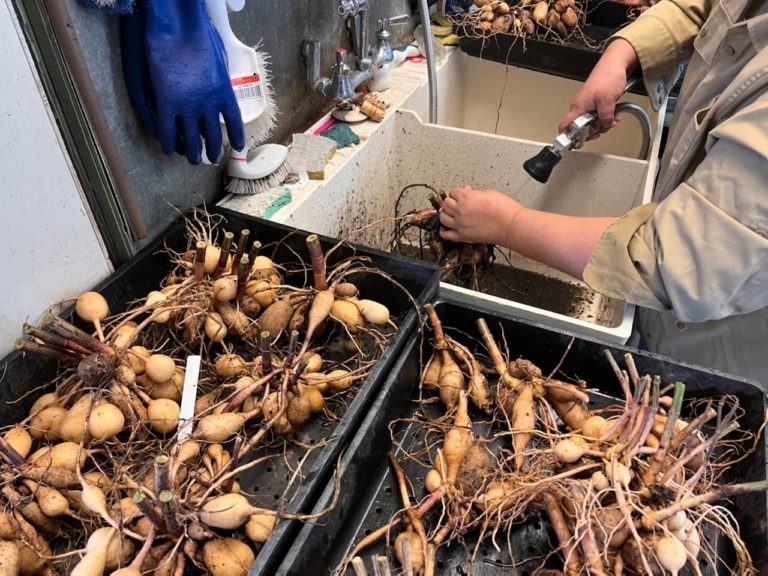
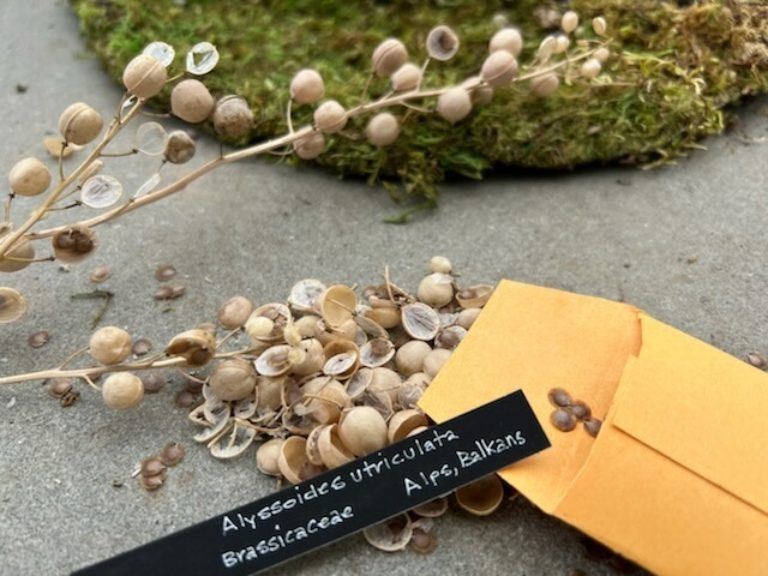
Seed-saving is another way to keep plants in the garden. Fruits, which contain seeds, are best collected before cutback occurs because they are delicate and could easily break. Seed-cleaning can happen whenever there is downtime, making it a perfect task for a chilly December day. Clean and viable seeds should be stored in a dry, cool environment for best germination rates.
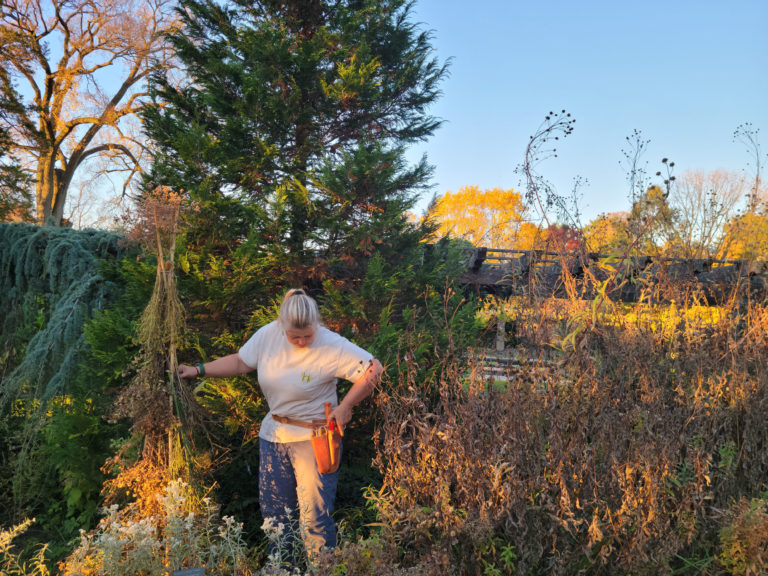
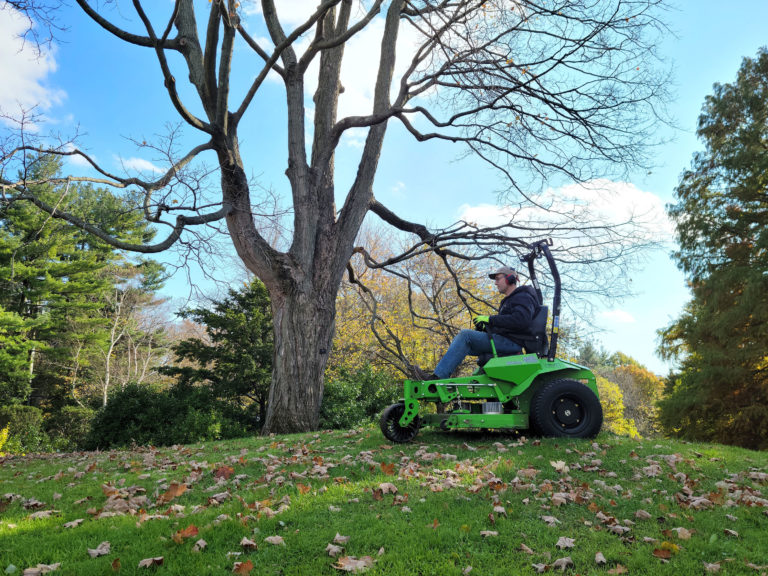
A closed-loop system has been in place for many years for reusing leaves at Wave Hill. In autumn, many leaves are left where they fall, offering insulation and habitat in garden beds and tree pits. Those that fall on pathways are collected and composted into leaf mold, which is spread in garden beds during the growing season. Finally, leaves that fall on the lawns are chopped and left in place. All these applications allow leaves, which are high in phosphorus and carbon, to reenter the ecosystem and gradually feed the topsoil with nutrients.
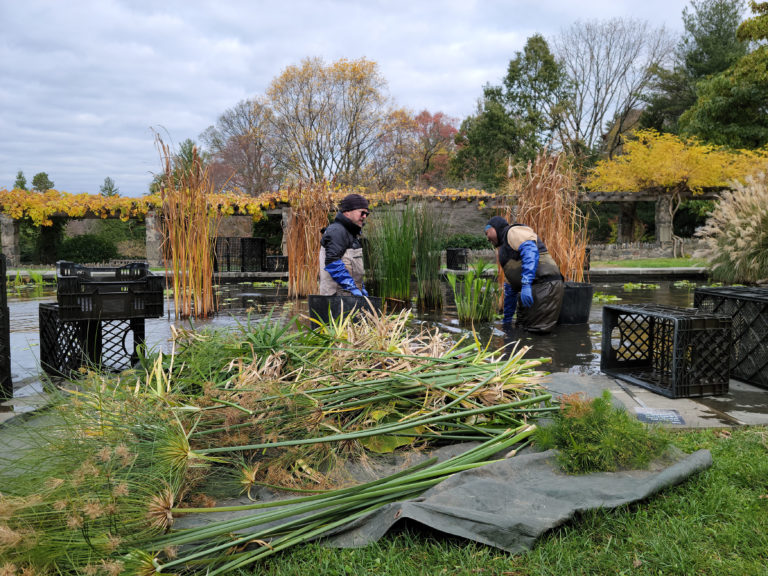
The Aquatic Garden is an area that expresses dormancy as early as August. Tropical water lilies cannot stand cooling water temperatures, so their leaves die off early, revealing red and yellow pigments. Pots of hardy native plants like Typha latifolia (cattail), Pontederia cordata (pickerelweed) and Nymphaea odorata cvs. (hardy waterlilies) are lowered to the bottom of the pool for the winter. The whole pool is about 22 inches deep but the northwest corner, where the drain is located, is the deepest, with about 27 inches of water. This corner will act as a nursery for overwintering Cyperus spp. which made up a Nile River-themed summer display. Tender plants like Cyperus spp. are usually stored indoors or in deep pools. There is no space inside for these large plants, so Bivens is experimenting with this outdoor storage option.
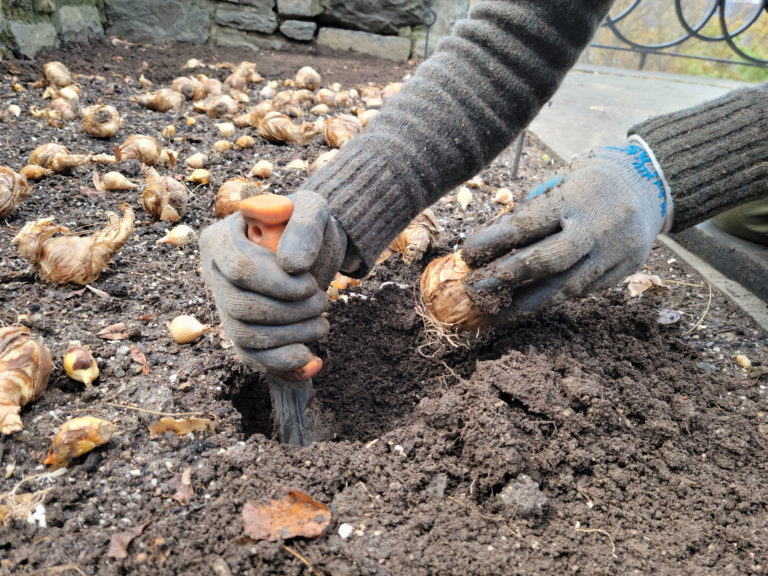
Bulb-planting can be delayed as long as the ground isn’t frozen. Wave Hill’s 2023 bulb displays will look different from previous years due to industry bulb-shortages and an extremely wet spring in 2022. The latter encouraged a significant tulip botrytis infection across many seasonal beds, such as the Paisley Bed, the Kate French Terrace and Pergola. Resistant plants, such as daffodils, grape hyacinth and camassia, will be planted in an effort to reduce future infections.
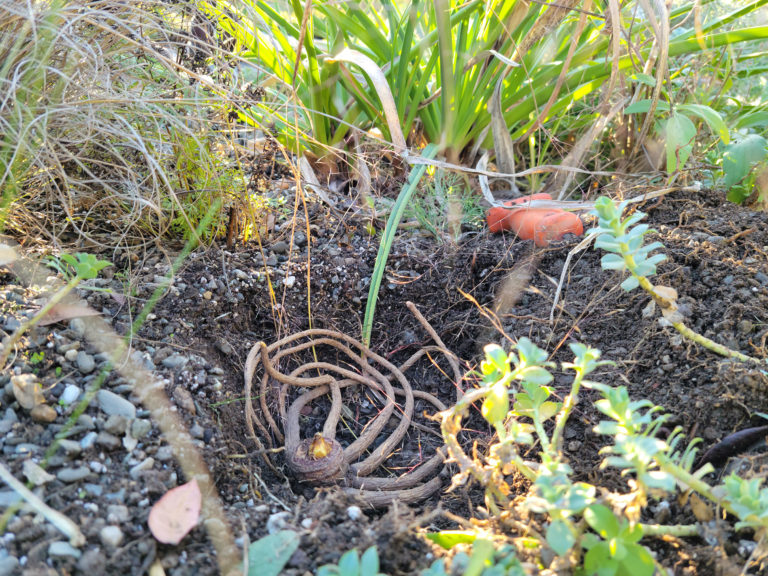
There is still much to be done to complete this “autumnal cadenza”. Many bulbs must get in the ground, tender plants are still getting moved indoors and the gardens must be tidied and tucked away for winter slumber. Not everything is slowing down. Doors for the Conservatory and roof panels for the Alpine House go on, helping keep warm air in and cold air out, awakening these plants from warmer regions of the world.
Jess Brey,
Ruth Rea Howell Senior Horticultural Interpreter
